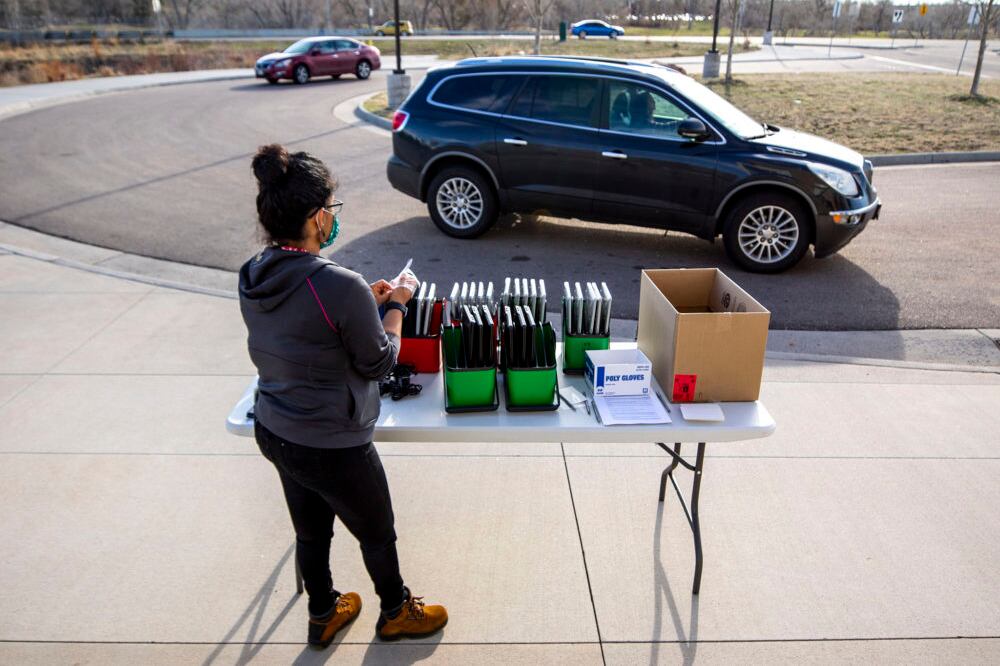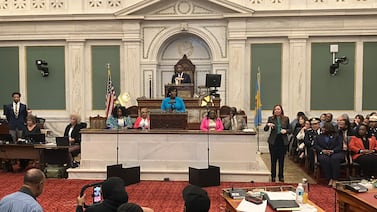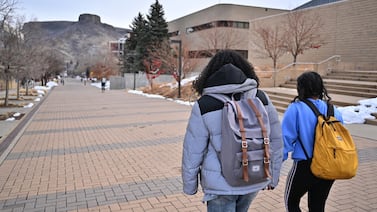Colorado school districts will share $121 million in federal funds to offset the costs of responding to coronavirus closures, including laptop purchases, development of new curriculum for online learning, and extra cleaning of school buildings.
The money comes from the $13 billion Elementary and Secondary School Emergency Relief Fund, part of the CARES Act federal stimulus package. The money goes to states, which then allocate it to districts based on how many students in poverty the districts serve.
The Colorado Department of Education gets to keep 10% of the state’s K-12 portion, about $12 million, to support districts’ efforts. State education leaders want this money to have a real impact, but they’re still figuring out the best way to do that.
“This money should be used in a rifle rather than a shotgun approach,” said State Board Member Steve Durham at a meeting this week. “We should target it to solving specific problems that this amount of money would solve.”
Durham made particular note of the more than 65,000 students who don’t have home internet access, weeks after schools switched to online learning. Board Member Joyce Rankin asked if the money could be used to develop infrastructure that would outlast the pandemic.
The state’s allocation isn’t enough to solve big problems, Education Commissioner Katy Anthes told the State Board.
“These are temporary dollars to solve temporary problems,” she said. “It’s about $12 million, and that can’t build broadband.”
It might buy hot spots, though. Colorado education officials are asking for feedback on how they should spend the money in this survey.
Many school districts have held back on saying how they would spend the money, saying they are waiting for additional state guidance. Part of that guidance will include ways districts should share money with their charter schools. The state Charter School Institute gets its own allocation.
U.S. Secretary of Education Betsy DeVos has issued guidance directing school districts to share relief money with private schools as well. Colorado education officials say they have had inquiries from some private schools, and they’re still working out guidelines for sharing money. At least one state, Indiana, has said it won’t follow federal guidelines.
Denver Public Schools plans to use its funds to offset costs associated with cleaning and disinfecting buildings, providing meals that are not subsidized, paying employees who could not work during closures, and buying curriculum and supplies for remote learning, a spokesperson said.
School districts can use the money to cover expenses they already incurred, but they have to fall into certain categories. Those include providing services to vulnerable students, coordinating preparations and response with other districts and government entities, providing mental health services, purchasing technology for remote learning, buying cleaning supplies, and training staff on sanitation practices.
The CARES Act also includes money for preschool, higher education, and a dedicated fund that governors can use to address the education needs of their choosing. Gov. Jared Polis has not yet said how he’ll spend Colorado’s $44 million share.
While welcome, the federal relief does not begin to cover the full cost of the coronavirus response. School board members, college presidents, and lawmakers have all signed letters to Congress asking for additional federal help. School districts are all planning for major budget cuts even as they prepare for a combination of in-person and online classes in the fall and expect students to have greater needs than ever.
See how much each school district is getting in the searchable table below.
Colorado CARES Act School District Allocations
| County | District | Amount of allocation |
|---|---|---|
| Adams | Mapleton 1 | $926,989 |
| Adams | Adams 12 Five Star Schools | $3,575,675 |
| Adams | Adams County 14 | $1,656,681 |
| Adams | Brighton 27J | $1,025,191 |
| Adams | Bennett 29J | $69,299 |
Source: Colorado Department of Education






